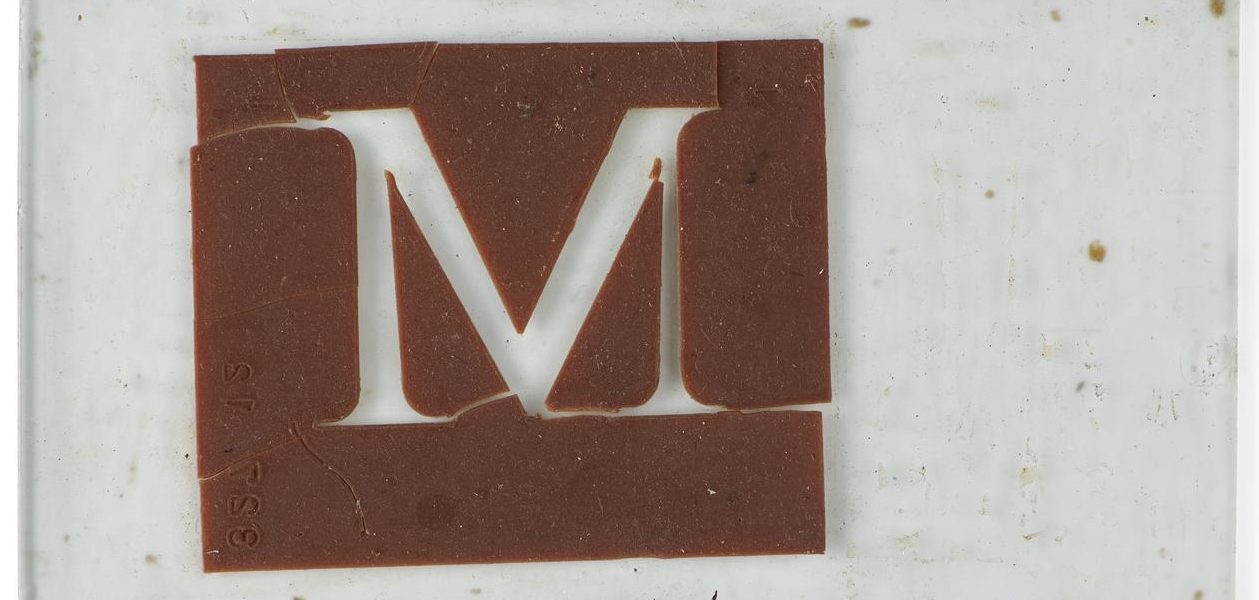In 2019, as part of an ongoing project to better understand the items we care for, we began a detailed review of the Monotype Collection.
Sitting within the Printing and Writing section of the Science Museum Group Collection, these items are on loan to the Type Archive in south London.
The Monotype Collection contains more than 2 million individual items, including a comprehensive archive, around 100 machines, patterns and matrices, and over 4000 drawers of punches of each typeface.

We acquired the Monotype Collection in 1992 for the Science Museum Group Collection, with support from the National Heritage Memorial Fund. However, until now it hadn’t been accessible online.
Last year we began planning how to document and photograph these items. Working on site, our team have conducted an inventory, taken photographs and researched the Monotype Corporation – the company who produced the items in the Monotype Collection.
Over 4,000 drawers of punches, 100 machines and 700 archive documents were examined and photographed, capturing the intricate type faces and the production process of Monotype.
The project took a year to complete, with the team looking at around 6,500 individual items.

We’ve also researched the Monotype Corporation.
Monotype hot-metal mechanical casting and typesetting approach was invented in America by Tolbert Lanston in 1887.
For the previous 400 years type had been composed by hand, so this mechanisation was a momentous development in the history of printing.
Not long after, UK investors were found for the Monotype machine in 1897 and a London office and Surrey factory were started soon after under the name of Lanston Monotype Company.
The factory manufactured the patterns, punches and matrices needed to cast single pieces of metal type, and they received casting machines from the American Monotype company. After 1924 the factory also started making and assembling its own machines and in 1931 it was renamed The Monotype Corporation Limited.
The corporation went on to supply the means to mechanically cast metal type to customers around the world, transforming access to the printed word and creating notable typefaces such as Gill Sans and Times New Roman.

Times New Roman was created by typographer Stanley Morison, designer Victor Lardent and the Monotype Corporation.
Morison had been challenged to produce a typeface for The Times newspaper that was economical with space and yet still highly legibility on newsprint pages.
The first issue of the newspaper to use Times New Roman was 3 October 1932. The typeface was released commercially in 1933, with the Times New Roman family becoming one of the most widely used typefaces for books, journals and jobbing printing.
Times New Roman is now pre-installed as a core font on Microsoft and Apple computers used by millions of people around the world.

The Monotype Corporation also commissioned Eric Gill to produce nine original typefaces, which generated 40 series for the Monotype hot-metal typeface library.
Using his experience with lettering on paper and stone, Gill created both Perpetua and Gill Sans, two of Monotype’s bestselling typeface families.
Gill Sans is a sans serif design that has the proportions of classical roman letters. It retains subtle contrasts in stroke widths that make it more readable in continuous text than mono-weight type.

The capital ‘R’ is a signature letter for Gill with its distinctive curved leg. It is a good place to start when trying to identify a Gill typeface.
In the decades since its creation, Gill Sans been widely used by British organisations such as London & North Eastern Railway, Penguin Books and the BBC, and on personal computers in the western world.

This project has provided online access to the Monotype Collection for the first time, with more than 5,800 records, including new photographs and insights published online.
We have discovered interesting stories about the people working at Monotype, many working for the company for their entire careers, and developed a greater understanding about typeface designers and the history and development of several typefaces.
